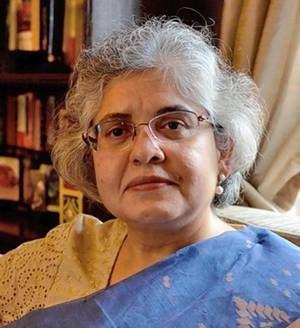
No evidence of radicalisation at Rohingya camps in Bangladesh, says UN official
UN’s Senior Humanitarian Coordinator Sumbul Rizvi warns of a humanitarian crisis ahead of cyclone season.
A year since nearly a million Rohingya refugees poured into Bangladesh, the situation is yet to stabilise, and the impending cyclone season could spell disaster for the humanitarian effort, a senior United Nations official based in Cox’s Bazaar has warned.
“Even to the naked eye it is clear that we are not just on the brink of disaster, but the disaster is happening around us,” said Sumbul Rizvi, the senior humanitarian coordinator for the Rohingya Refugee Response, making an appeal for more international funding. This year’s UN joint response plan (JRP) has received only 34% of the funds needed, in contrast to about 85% last year, she said.
Flagging response
Amidst signs of the flagging global response to the crisis, UN Secretary General Antonio Guterres addressed the Security Council on the situation on the ground this week, while a Human Rights Council report said the Myanmarmilitary leadership should be investigated for “genocide” in the violence in August 2017.
Text of the interview:
It is more than a year since the Rohingya camps were set up. What is the status there and how are you preparing for cyclone season in September?
In the beginning, the Bangladesh government had very little idea how big this would get, and even when we got on the ground, we were unprepared for the numbers: 5,00,000 people came in within four weeks last August-September. By global standards, the last such massive influx was in Rwanda in the early 1990s.
Now we have about 9,00,000, and people are still coming. The government of Bangladesh has taken a positive approach to them. But the challenges of a disaster prone zone, a cyclone-prone area remain. Even the regular monsoon this year impacted at least 50,000 refugees directly with landslides and shelter collapses. If there is a major cyclone in the next few months, we don’t have the capacity to bring in those who would be affected, into safe shelters and we don’t have enough cyclone shelters to keep them in.
Meanwhile, there appears little movement on repatriation for any of these refugees . So what’s next?
Let us remember, repatriation has to be voluntary. An MoU was signed by the Myanmar government and Bangladesh government as well as by the UN High Commission of Refugees and the UN Development Programme to facilitate the creation of an environment for potential return. We are hopeful that the two governments will continue their dialogue for repatriation and the international community will continue to support them. [The refugees] didn’t want to leave Myanmar, and they fled actual persecution, not just the fear of persecution. Each and every family has suffered and witnessed actual rapes, killing. The scale of the horror is evident. They continue to claim Rakhine as their home but we cannot let them return without guarantees of safety and dignity.
How big a problem is radicalisation of the young boys in the camps, many of whom are fatherless, and vulnerable to Jihadi groups looking for recruits, according to reports?
Since we work in the camps, I can tell you there is no sign of any such groups inside the camps. Bangladesh is a responsible country and capable of taking measures to counter such a threat.
The government has established several police stations and more than 70 senior administration officials who lead the response including the law and order situation. We need to ensure the young boys and girls in the camps must be given access to education. Their complete dependency on food aid, and the lack of a livelihood which in the natural process, would help the community deal with their trauma.
But let me tell you, the crime rate in Cox’s Bazaar is way below a population the size of a big city, and we should not be alarmist in our approach to them. I don’t know about credibility of the reports you refer to, but we mustn’t taint a refugee community that has fled such horrific violence themselves.
What is the UN’s expectation from the Indian government?
India is a significant neighbour to both Bangladesh and Myanmar. We do hear about Indian aid coming in including fuel, rain gear, baby food which is coordinated between Delhi and Dhaka.
Is there a worldwide refugee fatigue? Despite horrific stories of babies having been thrown into fires, we don’t see the world really coming to the Rohingya’s aid…
Yes, that is a frequent source of frustration, especially on the ground. The Bangladeshi people have been the first relief providers despite their own constraints. The UN has launched its Joint Response Plan (JRP), and at first, the plan was 80-85% funded. In July, the visit of the UN Secretary General Guterres and World Bank Chief Kim was a ray of hope, and they brought a grant of $400 million which is being underwritten by Canada.
But as of date, this year’s plan beginning March is only about 34% funded. Even to the naked eye, it is clear that we are not just on the brink of disaster, but the disaster is happening around us.
source: https://www.thehindu.com
